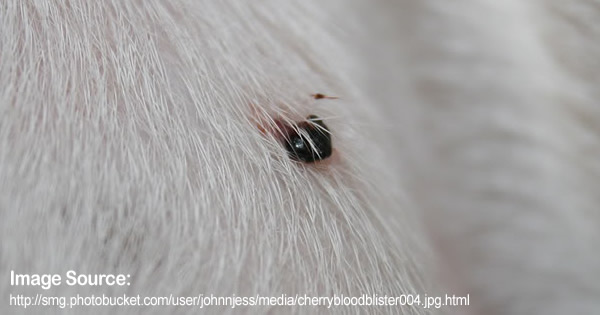
An abnormal mass of skin or swelling containing blood on skin. Blood-filled lumps can have different causes, such as an allergic reaction, infection, or traumas. Blood-filled lumps can also be a cancer. Some breed, such as boxers, golden retrievers, pitbulls, and German shepherds, are more susceptible for this type of cancer, which leads to the assumption that it may have a genetic predisposition. t is advised to consult a veterinarian to determine the cause of the lumps. In most cases the lumps can be removed.
How to Recognize
Hematomas are blood-filled lumps in pets. You should present any new lumps, bumps or swelling that you discover on our pet to the veterinarian to confirm a diagnosis and to implement treatment. Daily grooming and petting sessions offer the perfect opportunities to check your dog or cat for any new lumps in their early stages of formation. Observe your pet’s outer ears for puffiness. Feel your pet’s body for lumps or swellings. A hematoma will feel firm, and it may be painful when palpated. Hematomas can appear as any size or shape. They can appear anywhere on the body, but they are most common on a pet’s outer ear.
Causes of Blood Filled Lumps
Blood-filled lumps are usually caused by physical trauma. In the case of an aural hematoma, a dog or cat may be itchy as a result of ear mites or an ear infection. Intense scratching and head shaking can inflict trauma to small blood vessels in the outer ear. Blood seeps from these vessels and pools into a pocket that forms between the skin and the cartilage of the earflap. This fluid-filled pocket is called a hematoma. Aural hematomas can occur in dogs and cats, but they are most typical among dogs with pendulous earflaps. Rough play or fighting can also cause the trauma that results in a hematoma. Some causes of hematomas that occur elsewhere on a pet’s body include blood clotting disorders and skin conditions, such as contact allergic dermatitis.
Diagnosis
A veterinarian can usually recognize an aural hematoma on sight. Any hematoma will be confirmed by aspirating the fluid from the lump with a needle and syringe. These aspirations are performed on any new lump or bump. In the case of suspicious lumps, the aspirated material is sent to a laboratory for cytology. If the veterinarian suspects a hematoma, an extraction of pure blood will confirm the diagnosis. Be aware that in most cases, the hematoma will refill with blood within a week after aspiration.
Similar Symptoms
When a dog or cat has an aural hematoma, the outer ear will appear thickened. If the hematoma occurs on another area underneath the skin, the affected area will be swollen. A pet may scratch or lick more at the ear or other affected area, and the pet may pull away in pain if the area is touched. Hematomas can also occur internally. In the case of an internal hematoma, symptoms will not be evident until the affected organ begins to fail as a result of vessel blockage.
Possible Conditions
Another type of lump is called a seroma. Seromas differ from hematomas in that they are filled with fluid that contains blood, while hematomas contain pure blood. They most often occur at the incision area during post-surgical recovery. Seromas usually result from a pet engaging in physical activity before the surgical site has healed. The fluid contained in most seromas will eventually be reabsorbed into the body.
Treatment for Blood Filled Lumps
Hematomas are a source of discomfort for your pet. While aural hematomas can heal without treatment, the result is a malformation of the ear that is known as cauliflower ear. The most effective form of treatment for hematomas is surgery. The area is opened and drained, and then the pocket is sutured flat in order to prevent future blood pooling. A temporary drain may be placed to prevent pooling during the healing period. In the case of a hematoma that has resulted from ear mites, an infection, a skin condition or a clotting disorder, the underlying condition will need to be treated as well.
Pet Insurance
When adding a dog or cat to your family you want to make sure your pet is happy, healthy and protected. During its lifetime your pet is exposed to many illnesses and diseases and some breeds are affected by a congenital disease which is a condition existing at birth. At these moments when your pet is ill or maybe needs surgery, you want to be protected for the unexpected and high veterinarian costs.